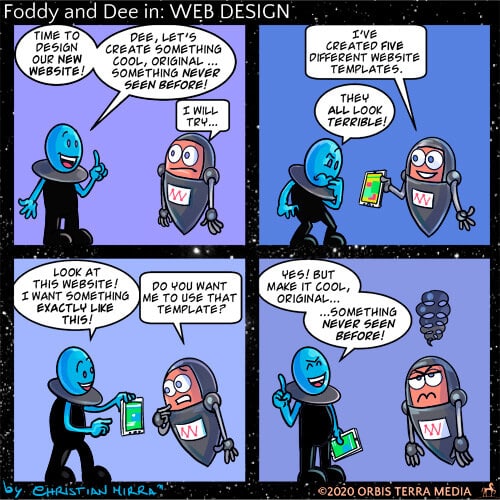Web Design

The purpose of your company’s website is to attract people to your products or services and entice them into becoming customers. Getting found on the internet is certainly a fundamental but only the first of several steps to achieve this purpose.
Whether you choose to hire a designer or take a DIY approach, web design influences your ability to create and nurture relationships online. If you’re unsure what to consider when designing a website, there are three key areas you should keep in mind:
1. Take good care of the overall aesthetics of your website
Every website should be beautiful, appealing and engaging. However, it’s most important to answers any burning questions your visitors might have the moment they arrive.
The way you use colours, images and design will have an immediate impression on your visitors. First impressions are important because it takes only 1/10th of a second for someone to make a judgement about a person based on their outward appearance. The same goes for the appearance of a website and the overall impression of a brand.
Google’s research shows that people judge the aesthetics of a website within 50ms and emphasises that aesthetics should have minimal visual complexity to help capture a person’s interest.
2. Monitor the performance of your website, especially on a mobile device
According to Statista, more than 50% of web traffic comes from mobile devices. This requires web design to consider more than just the colours, fonts and graphics to be used through each page.
A website’s performance depends on factors such as load time, site security, functionality on mobile devices and more. Let’s look at two real-world examples where a website’s performance had a positive and a negative impact.
AutoAnything is an online retailer of specialised automotive parts. When they reduced their website’s load time by half, they experienced a boost of 12 to 13% in sales.
On the other hand, the BBC news broadcasting company noticed a loss in visitors due to slow load times. They discovered that for every second a page takes to load, 10% of their users leave.
3. Websites are continuously evolving, and brands have to adapt to survive
The nature of the internet is continuously evolving, which means that web design requires ongoing maintenance and updates to stay relevant and competitive.
From a search engine point of view, algorithms control which websites rank first in a search query. Keywords are an important part of your SEO strategy; however, search engines like Google are putting more emphasis on a website’s load time, content quality and mobile experience. According to Google’s Webmaster Guidelines, you should “make [websites] primarily for users, not search engines.”
If you thought a website was a one-time investment, rethink this in terms of an ongoing process that continually improves the experience for your visitors. You can start small by focusing on changes to the design, performance and SEO to find better ways to increase engagement on your website.

